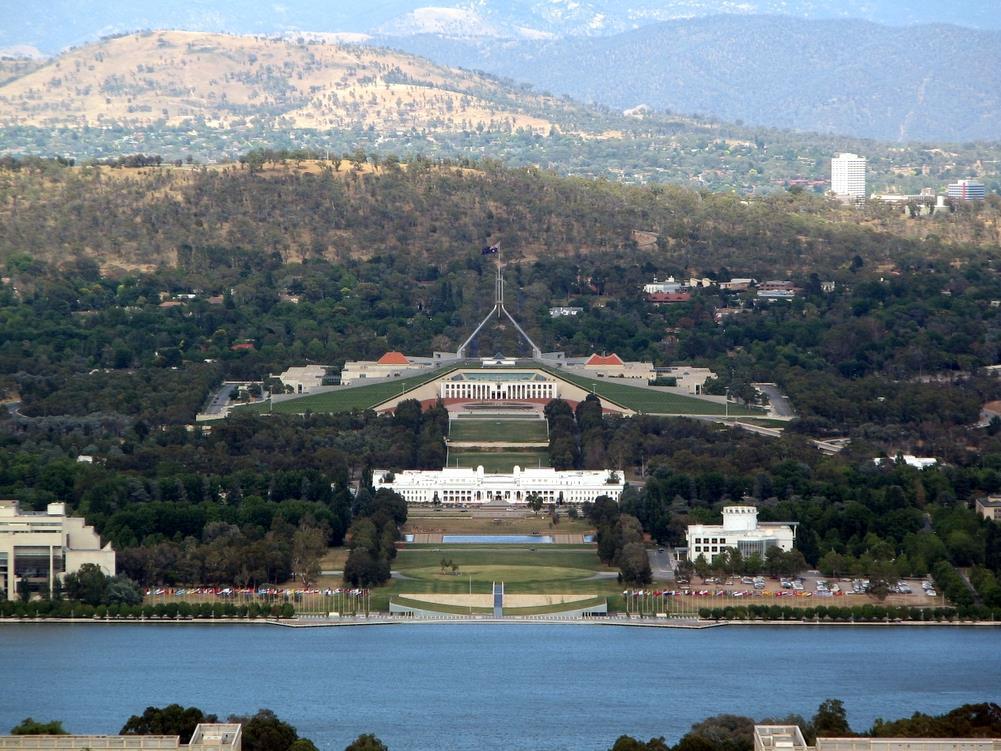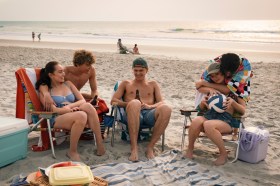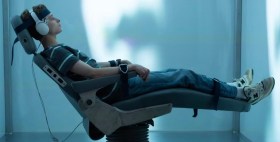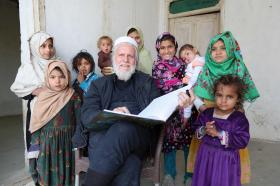Image: Parliament in a certain majestic isolation.
The House of Representatives Standing Committee on Communications and the Arts caused a lot of industry eyes to roll when it chirpily decided to hold an inquiry into Factors contributing to the growth and sustainability of the Australian film and television industry.
Fortunately it turned out to be a dress rehearsal into the arguments put to the overlapping joint ACMA Department of Communications and Screen Australia Enquiry into Australian and Children’s Screen Content. The resulting conclusions from the Reps committee released last week laid out the unnerving outcomes which could descend on the sector in 2018, just before the budget in May.
The mess is so troubling that the Labor Party members inserted a separate dissenting chapter which locked horns with the conservative majority over every significant category.
The Attack on the Offset
The big frightener is the recommendation about the Producer Offset. After noting that everyone wants the Offset on television to be doubled from 20% to 40%, it said that the TV offset should be raised to 30% and the film offset should drop by 10% to 30%. This means that television doesn’t get enough and the embattled film industry loses ten percent of its budgets.
How did it get itself into this fix? Some rubbery calculations in the shadow of our fearsomely mean Treasury. The department already expects the offset costs to drop by $7.7m this financial year, followed by $46m in 2018-19 and another $35m the year after that, so the sector hits 2020 with $90m a year less, which is the equivalent to all of Screen Australia. Or possibly $300m worth of production.
The committee asked the Parliamentary Budget Office to cost the proposals. It claims that a 40% TV offset would cost the government an extra $65m/year. Add a few other detailed reforms and the total climbs to an extra $106m/year.
On the same day, the government released the 2015-16 taxation transparency data which tells us that Nine had an income of $1.75b, a taxable income of $217.5m, and paid tax of $60m. Seven had $3.34b [that is the whole business], a taxable income of $122.7m, and paid no tax. Ten Network Holdings had an income of $705m, had no taxable income and paid no tax.
The government cancelled the license fees in the last budget, so Nine for instance was saved $33m. You can see why the government might be leery of shovelling yet more money into the commercial television maw, even if it goes to producers.
The report uses the Deloitte Access Economics report cleverly commissioned by Screen Australia, which turned out to provide some handy baselines, though only for 2015.
The $106m/year can be set against the fact that the domestic production industry generates $847m and 7,650 full time equivalent jobs. Digital games cost $123m. Overseas productions spent $382m, and sales of Australian productions overseas were worth $252m in export earnings.
According to the government, the tax offset provided over $313m in the 2016-17 financial year so these reforms should provide an extra third to the system.
Remember that these are tax rebates, which the government gets back if the industry stimulus increases revenue. How much new income can be expected from this package? What happens if the SVOD sector is required to contribute to a content fund, which would trigger more rebate returns and access Screen Australia funds as well?
This has not been calculated at all. We are left only with that ‘run, run the budget is rooned’ loss of revenue. To the untutored eye the whole set of charts look dodgy. There is no allowance for inflation, and the number $35m occurs repeatedly in unrelated areas of the economy.
The report does do some sums, but they seem to be hypnotised. Magically the cost of raising the amount for television at 30% rather than 20% will also cost $35m/year. And the cost of dropping the feature threshold will save the government $35m.
So the cost neutral solution will be that 30% mark which is exactly what the report advocates. As far as the industry is concerned, this is the worst possible outcome, and the numbers are too good to be true.
But it does deal with the ‘harmonisation problem’ – it is bureaucratically easier to handle a constant figure across the system because it takes out anomalies like the ambiguous status of tele-features and feature documentaries.
The Labor members are opposed to the reduction of the 40%. But it does not, after a decade of lobbying, commit to supporting the 40% for television. We are not even getting a tiny concession from a backwater backbenchers’ committee. They did however accept that removing the 65 episode caps on the offset for TV series would be a good idea.
Some Good Ideas
There are some useful conclusions. The report wants the government to reinstate the Interactive Games Fund formerly administered by Screen Australia and to extend the offset system to the games sector.
It wants the location offset to be raised to 30%, and allow overseas productions to claim both the PDV and location offsets, which cover different parts of the production process.
It also wants to drop the QAPE threshold, the minimum budget at which the offset cuts in, to be lowered from $500,000 to $250,000. The cap of 65 episodes of a television series after which it can’t get the offset should be dropped. While the committee is being mingy about the 40%, it has conceded those other reforms which together add another $41m to the offset total.
From here on in, the recommendations consider areas in which the industry is not unified. It was positive on television quotas in general, wanting to sustain production at current levels and extend quotas to SVOD services, perhaps with the Foxtel model.
But in children’s TV it goes to water. Review the hours based quota, it says, and consider a contestable fund. Here the ALP points out that the same strategy stiffed the English children’s sector and emphasised the need for caution.
Ignoring the Broadcaster Budget Problem
Not a word past the lips of the government side about the budgets of the ABC and SBS. Instead, it wants to impose a charter quota on the ABC for children’s content. But it does not want to mandate budget transparency or regional expenditure, two other possible areas of reform.
Instead, it turns on SBS, despite the evidence that it is broke. Its charter should ‘be amended to require additional multicultural programming to be sourced domestically so that a minimum of 50 per cent Australian content is shown across all of its channels. This must also include a commitment to more content from regional areas.’ Which should be reported in the annual reports.
And it wants to tell Screen Australia to ‘earmark 10% of its funding for productions outside of Australia’s two major capitals.’
The ALP has the same simple objection to each of these provisions. Don’t do anything until the budget is fixed. It is not promising to fix the budget, just to insist on inertia until it raised. Inertia, it seems, is an acceptable policy outcome.
The committee wants to see more co-production treaties with Asia, to which no-one would object. It also wants the mental health of the sector to be taken up by the Minister for Small Business, a position currently held by Michael McCormick, a enthusiast of the Murrumbidgee Turf Club, and a former editor of the Daily Advertiser in Wagga Wagga who ultimately sued for unfair dismissal. On these matters the ALP is mute.
The Opposition springs to the defence of the MEAA’s right to union consultation on the employment of foreign actors, which is one of most divisive issues in the industry. The report wants to close that down, which Screen Producers Australia would regard as a victory of sorts. MEAA will be digging in the stony ground with bayonets to protect their attacking troops.
Bouncing around in the detail are some positive statements that didn’t get headlined in the 13 recommendations. New Zealand productions should not be considered as Australian for quota purposes. The notion that the offset should be restricted to cinemas or mainstream broadcast TV should be abandoned.
But all of this is tied up in the idea that the gordian knot can be cut by creating a uniform 30% rebate, a figure that was never backed by any meaningful research into changing demand and its impact on the system.
In a sense the biggest problem seems to be naivity – it has worked off lots of interesting data and arguments, with very little ability to explore the wider impact of rising demand in an uncapped system.
Independent producers like to talk about the levers which give them control, which means the offset. But the real power is held by the distributors and exhibitors who shape projects to their financial demands. The sector has spent $1b over the last ten years in offset returns. Yet the cuts to the ABC alone are around $250m/year, which is twice the offset. And that $1b is a bit under the income of the ABC in a single average year.
We can’t cut the system into pieces. The ABC and SBS are the crucial domestic players for which the government has direct responsibility and they are the single biggest influence. Everything has to fit together.





